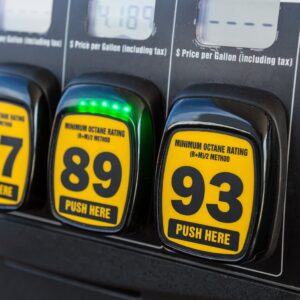If you’re at an emissions center having your vehicle tested, its catalyst or converter monitor needs to work to complete the test. However, you might be told that your vehicle’s catalyst monitor isn’t ready. What does this mean?
This article will discuss this issue, the catalyst monitor’s functions, and the symptoms caused by a faulty catalyst monitor. That said, there are some instances where the catalyst monitor is not ready but there’s no trouble code.
The Importance of Catalyst Monitors in Emissions Testing
Modern vehicles have onboard diagnostic systems with sensors that send information to a computer. They determine whether certain vehicle systems are malfunctioning. One of these sensors is the catalyst monitor, which checks the catalytic converter.
Your vehicle can occasionally use the catalyst monitor, which uses an O2 sensor right behind the light-off catalyst to check the catalytic converter’s functionality if you drive within a specific driving pattern determined by the manufacturer. The vehicle usually needs to be driven for a certain amount of time at a certain speed before the catalyst monitor will complete its cycle. The catalyst monitor only runs when those criteria are met.
The vehicle usually needs to be driven for a certain amount of time at a certain speed before the catalyst monitor will complete its cycle. The catalyst monitor only runs when those criteria are met.
– Richard McCuistian, ASE Certified Master Automobile Technician
The downstream O2 sensor is compared to the upstream O2 sensor to determine whether the light-off catalyst (NOx control cat) is storing oxygen properly. The second catalyst is called the “oxidation catalyst” and isn’t checked for efficiency at all on any vehicle.
If the catalyst monitor deems your catalytic converter faulty, the monitor may log a trouble code and trigger the check engine light.

What Is a Catalyst Monitor?
The catalyst monitor is a system that uses the upstream and downstream oxygen sensors to check the oxygen storage efficiency of the catalytic converter. One sensor is located along the exhaust system before the catalytic converter, while the other is located after the converter.
The upstream O2 sensor is primarily used by the PCM for fuel trim, but if the upstream sensor fails, the PCM will begin to use the downstream sensor for fuel trim.
If a catalyst monitor isn’t ready, that means that it hasn’t completed its test. Hence, the vehicle will fail emissions testing.
The light-off catalytic converter that is monitored separates NOx into nitrogen and oxygen. The oxidation cat that isn’t monitored adds a molecule of O2 to CO and two molecules of O2 to HC, converting both CO and HC to CO2.
If the catalytic converter is working properly, the oxygen levels detected by the downstream oxygen sensor should be low. If the downstream oxygen sensor detects oxygen levels that are similar to the first sensor, then it means the catalytic converter isn’t properly breaking down nitrogen oxides.
Can I Pass the CA Smog Test When the Catalyst Monitor Is Not Ready?
A functioning catalyst monitor is necessary if you want to pass the emissions test.
If your catalyst monitor is defective, then you’re going to fail your emissions test. The test will use your vehicle catalyst monitor to check the functionality of your catalytic converter.
Most emissions tests generally rely on onboard diagnostic systems. If your vehicle has a logged trouble code or has a check engine light, your vehicle will automatically fail the test.
What Are the Symptoms of a Bad Catalyst Monitor?
If your vehicle has a bad catalyst monitor, it might log a trouble code and activate your vehicle’s check engine light. It’ll also fail emissions tests.
Tips for Troubleshooting a Bad Catalyst Monitor
Wondering how to get your catalyst monitor ready for an emissions test? Getting your vehicle’s catalyst monitor to run can be quite tricky. There are forum users who have shared how they get their vehicle’s catalyst monitor to run, and their methods vary greatly. Here are some tips to keep in mind.
Learn Your Vehicle’s Drive Cycle
Your vehicle’s catalyst monitor will only activate if you drive your vehicle in a specific manner. These are called drive cycles, and each vehicle might have a unique drive cycle.
For example, a Chevrolet vehicle requires you to idle the vehicle for 5 minutes, drive 5 minutes above 55 mph, drive 2 minutes at a steady 40 mph, and then drive 2 minutes at a steady 55 mph. Another vehicle required that it must be driven at 55 mph for 10 minutes.
The complexity of the drive cycle can vary. It’s a complicated task, but it’s necessary to ensure that the test achieves consistent and accurate results.
Be Patient
Sometimes, it might take several tries to get the catalyst monitor to run. This might seem frustrating, but you must be patient.
Ask a Trustworthy Mechanic
A mechanic will know how to get your vehicle’s catalyst monitor to run, as they’ve probably worked on similar issues on other vehicles.
Another reason why you need to ask a mechanic is that information about vehicle drive cycles might be only accessible on a manufacturer’s technical information website. That’s usually behind a paywall. Mechanics are typically subscribed to these websites because many fixes will require technical information.
Any information provided on this Website is for informational purposes only and is not intended to replace consultation with a professional mechanic. The accuracy and timeliness of the information may change from the time of publication.
































